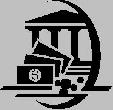
 |
|
| Financial Terms | |
| P&S (P and S) |
|
Information about financial, finance, business, accounting, payroll, inventory, investment, money, inventory control, stock trading, financial advisor, tax advisor, credit.
Main Page: inventory, payroll, accounting, tax advisor, money, financial, credit, financial advisor, |
Definition of P&S (P and S)
P&S (P and S)Purchase and sale statement. A statement provided by the broker showing change in the customer's net
Related Terms:NPV (net present value of cash flows)Same as PV, but usually includes a subtraction for an initial cash outlay. After-tax profit marginThe ratio of net income to net sales. After-tax real rate of returnMoney after-tax rate of return minus the inflation rate. American Stock Exchange (AMEX)The second-largest stock exchange in the United States. It trades Balance of paymentsA statistical compilation formulated by a sovereign nation of all economic transactions Balance of tradenet flow of goods (exports minus imports) between countries. Balance sheetAlso called the statement of financial condition, it is a summary of the assets, liabilities, and  Balance sheet exposureSee:accounting exposure. Balance sheet identityTotal Assets = Total Liabilities + Total Stockholders' Equity Balanced fundAn investment company that invests in stocks and bonds. The same as a balanced mutual fund. Balanced mutual fundThis is a fund that buys common stock, preferred stock and bonds. The same as a Bargain-purchase-price optionGives the lessee the option to Purchase the asset at a price below fair market Basic balanceIn a balance of payments, the basic balance is the net balance of the combination of the current Best-efforts saleA method of securities distribution/ underwriting in which the securities firm agrees to sell Bill of exchangeGeneral term for a document demanding payment. BrokerAn individual who is paid a commission for executing customer orders. Either a floor broker who  Broker loan rateRelated: Call money rate. Brokered marketA market where an intermediary offers search services to buyers and sellers. Cash flow after interest and taxesnet income plus depreciation. Changes in Financial PositionSources of funds internally provided from operations that alter a company's Chicago Mercantile Exchange (CME)A not-for-profit corporation owned by its members. Its primary Clear a positionTo eliminate a long or short position, leaving no ownership or obligation. Closing purchaseA transaction in which the Purchaser's intention is to reduce or eliminate a short position in Closing saleA transaction in which the seller's intention is to reduce or eliminate a long position in a stock, Commission brokerA broker on the floor of an exchange acts as agent for a particular brokerage house and Commodities Exchange Center (CEC)The location of five New York futures exchanges: Commodity Compensating balanceAn excess balance that is left in a bank to provide indirect compensation for loans  CompositionVoluntary arrangement to restructure a firm's debt, under which payment is reduced. Conditional sales contractsSimilar to equipment trust certificates except that the lender is either the Contingent deferred sales charge (CDSC)The formal name for the load of a back-end load fund. Convention statementAn annual statement filed by a life insurance company in each state where it does Convertible exchangeable preferred stockConvertible preferred stock that may be exchanged, at the Days' sales in inventory ratioThe average number of days' worth of sales that is held in inventory. Days' sales outstandingAverage collection period. Direct stock-purchase programsThe Purchase by investors of securities directly from the issuer. Domestic International Sales Corporation (DISC)A U.S. corporation that receives a tax incentive for Double-declining-balance depreciationMethod of accelerated depreciation. Electronic data interchange (EDI)The exchange of information electronically, directly from one firm's European Monetary System (EMS)An exchange arrangement formed in 1979 that involves the currencies ExchangeThe marketplace in which shares, options and futures on stocks, bonds, commodities and indices The ExchangeA nickname for the New York stock exchange. Also known as the Big Board. More than Exchange controlsGovernmental restrictions on the Purchase of foreign currencies by domestic citizens or Exchange of assetsAcquisition of another company by Purchase of its assets in exchange for cash or stock. Exchange of stockAcquisition of another company by Purchase of its stock in exchange for cash or shares. Exchange offerAn offer by the firm to give one security, such as a bond or preferred stock, in exchange for Exchange rateThe price of one country's currency expressed in another country's currency. Exchange Rate Mechanism (ERM)The methodology by which members of the EMS maintain their Exchange rate riskAlso called currency risk, the risk of an investment's value changing because of currency Exchange riskThe variability of a firm's value that results from unexpected exchange rate changes or the Exchangeable SecuritySecurity that grants the security holder the right to exchange the security for the Exposure nettingoffsetting exposures in one currency with exposures in the same or another currency, Firm's net value of debtTotal firm value minus total firm debt. Fixed-exchange rateA country's decision to tie the value of its currency to another country's currency, gold Floating exchange rateA country's decision to allow its currency value to freely change. The currency is not Floor brokerA member who is paid a fee for executing orders for clearing members or their customers. A Foreign exchangeCurrency from another country. Foreign exchange controlsVarious forms of controls imposed by a government on the Purchase/sale of Foreign exchange dealerA firm or individual that buys foreign exchange from one party and then sells it to Foreign exchange riskThe risk that a long or short position in a foreign currency might have to be closed out Foreign exchange swapAn agreement to exchange stipulated amounts of one currency for another currency Foreign Sales Corporation (FSC)A special type of corporation created by the Tax Reform Act of 1984 that Forward exchange rateExchange rate fixed today for exchanging currency at some future date. Forward saleA method for hedging price risk which involves an agreement between a lender and an investor Gold exchange standardA system of fixing exchange rates adopted in the Bretton Woods agreement. It Historical exchange rateAn accounting term that refers to the exchange rate in effect when an asset or Income statement (statement of operations)A statement showing the revenues, expenses, and income (the Installment saleThe sale of an asset in exchange for a specified series of payments (the installments). International Monetary FundAn organization founded in 1944 to oversee exchange arrangements of International Monetary Market (IMM)A division of the CME established in 1972 for trading financial Ledger cashA firm's cash balance as reported in its financial statements. Also called book cash. Limitation on merger, consolidation, or saleA bond covenant that restricts in some way a firm's ability to Limitation on sale-and-leasebackA bond covenant that restricts in some way a firm's ability to enter into London International Financial Futures Exchange (LIFFE)A London exchange where Eurodollar futures Long positionAn options position where a person has executed one or more option trades where the net Limitation on asset dispositionsA bond covenant that restricts in some way a firm's ability to sell major assets. London International Financial Futures Exchange (LIFFE)London exchange where Eurodollar futures as well as futures-style options are traded. Minimum purchasesFor mutual funds, the amount required to open a new account (Minimum Initial Modigliani and Miller Proposition IA proposition by Modigliani and Miller which states that a firm cannot Modigliani and Miller Proposition IIA proposition by Modigliani and Miller which states that the cost of Monetary goldGold held by governmental authorities as a financial asset. Monetary policyActions taken by the Board of Governors of the Federal Reserve System to influence the Monetary / non-monetary methodUnder this translation method, monetary items (e.g. cash, accounts Money purchase planA defined benefit contribution plan in which the participant contributes some part and Mutual offsetA system, such as the arrangement between the CME and SIMEX, which allows trading Negotiated saleSituation in which the terms of an offering are determined by negotiation between the issuer Net adjusted present valueThe adjusted present value minus the initial cost of an investment. Net advantage of refundingThe net present value of the savings from a refunding. Net advantage to leasingThe net present value of entering into a lease financing arrangement rather than Net advantage to mergingThe difference in total post- and pre-merger market value minus the cost of the merger. Net asset value (NAV)The value of a fund's investments. For a mutual fund, the net asset value per share Net assetsThe difference between total assets on the one hand and current liabilities and noncapitalized longterm Net benefit to leverage factorA linear approximation of a factor, T*, that enables one to operationalize the Net book valueThe current book value of an asset or liability; that is, its original book value net of any Net cash balanceBeginning cash balance plus cash receipts minus cash disbursements. Net changeThis is the difference between a day's last trade and the previous day's last trade. Net errors and omissionsIn balance of payments accounting, net errors and omissions record the statistical Net financing costAlso called the cost of carry or, simply, carry, the difference between the cost of financing Net floatSum of disbursement float and collection float. Net incomeThe company's total earnings, reflecting revenues adjusted for costs of doing business, Net investmentGross, or total, investment minus depreciation. Related to : financial, finance, business, accounting, payroll, inventory, investment, money, inventory control, stock trading, financial advisor, tax advisor, credit. |